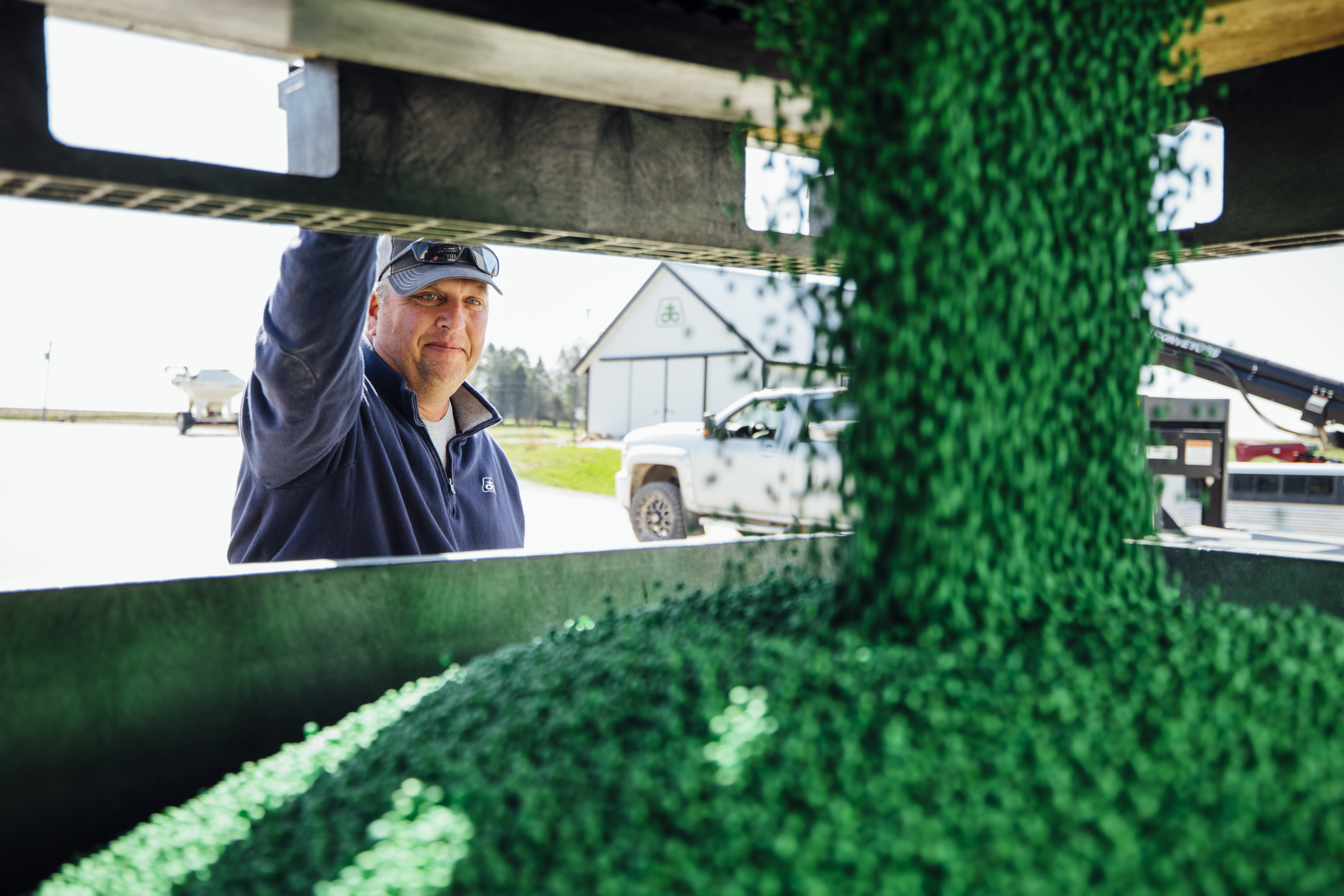Responsible and Sustainable Use of Seed Treatments

Seed treatments are a convenient, effective and sustainable way for farmers to protect their crops through the vulnerable, early growth stages. With seed treatments, farmers are using crop protection products in a way that is highly targeted, can potentially reduce the need for other inputs and helps complement their Integrated Pest Management (IPM) practices.
Like any on-farm input, however, seed treatments must be managed carefully to protect people, non-target organisms and the environment. Here are some of the ways farmers act as good stewards of this important technology.
Every input farmers use—including treated seed—is labeled for proper use on the farm. Instructions are carefully regulated by governmental organizations, and farmers must follow these practices. Seed treatments often involve multiple ingredients, so farmers need to follow the directions that apply for every ingredient involved. For farmers, the very first step before working with treated seed is reading the label.
When farmers are loading treated seed into their planters, or otherwise handling it, label and use directions will also recommend certain personal protective equipment (PPE). Wearing long sleeves, long pants, gloves and eye protection can help minimize exposure, including any dust from the seed.
Handling also includes proper clean-up for any spilled seed. Following best practices with spilled seed helps ensure that non-target organisms, such as wildlife, don’t accidentally ingest treated seed.

Farmers must handle treated seed according to label and use directions, which apply to any ingredients in the seed treatment. This careful stewardship helps protect people, non-target organisms and the environment.
In accordance with any labeled instructions, when it’s time for planting, farmers may utilize planter aids such as talc or graphite to help the seed flow easily through the planter. Seed treatments developed by Corteva Agriscience include polymers which are tested and selected to help reduce dust and improve seed flow through the planter.
Many seed treatment components are compatible with pollinators. However, if a seed treatment includes an ingredient that could potentially harm pollinators, farmers take extra steps to reduce those risks. During planting, some dust-off from seed treatments is unavoidable. To help reduce pollinator exposure to this dust, farmers scout their fields before planting to check for the presence of pollinator hives and monitor wind conditions to reduce the chances of dust drift. Another simple step farmers can take is to cut down flowering weeds on the edges of their fields before planting. This makes the field area less attractive to pollinators during planting time. Once the planted crops begin to flourish, pollinators return to the fields to do their good work. Flowering crops from treated seed don’t pose any threat to pollinating insects.
Farmers start and end the planting of treated seed with clean equipment, carefully ensuring there are no lingering treated seeds or residues in the planter. Aside from this being a good farm management practice, in the U.S. and in much of the world, there is zero tolerance for any treated seed presence in harvested grain. Equipment used for treated seed planting is typically separate from equipment used for harvesting, so risks of treated seed mingling with harvested seed is quite low. However, if a farmer does need to use any of the same equipment at harvest, he or she must follow careful procedures for equipment disassembly and cleaning. Farmers also carefully manage the wastewater from any cleaning processes, disposing of it according to local regulations so it does not come into contact with soil, surface and ground water or septic systems.
Seed is one of a farmer’s most valuable inputs, so there isn’t usually much seed waste on a farm. If farmers have some extra treated seed at the end of their planting, it may sometimes be stored for later planting. There are also rules that govern where excess treated seed can be planted, such as on fallow ground on the farm, or at the end of turnaround rows. In cases where a farmer ends up with a large amount of excess treated seed, it must be disposed of following local regulations that are designed to protect soil, water, people and non-target organisms like wildlife and pollinators.
There are important rules and regulations farmers need to follow when working with treated seed, but the effort is well worth it. Proper stewardship of seed treatments helps the crop protection footprint remain as small possible, keeping treatments only where they are intended to be (on the seed). That’s ultimately good for soil, water and pollinators—all of which are important to farm health.
Stewardship also helps farmers ensure the technology used in seed treatments keeps working. Following label directions and regulations means treatments are only used in the amounts and ways that are intended, and that helps reduce chances of pests and diseases developing resistance to certain ingredients.
Seed treatments help farmers get their crops off to a strong start that can lead to better harvests. As good stewards of this highly useful input, farmers help keep them working reliably, safely and sustainably for the future. To learn more about seed treatment stewardship, check out the guide developed by The American Seed Trade Association (ASTA) and Crop Life America.